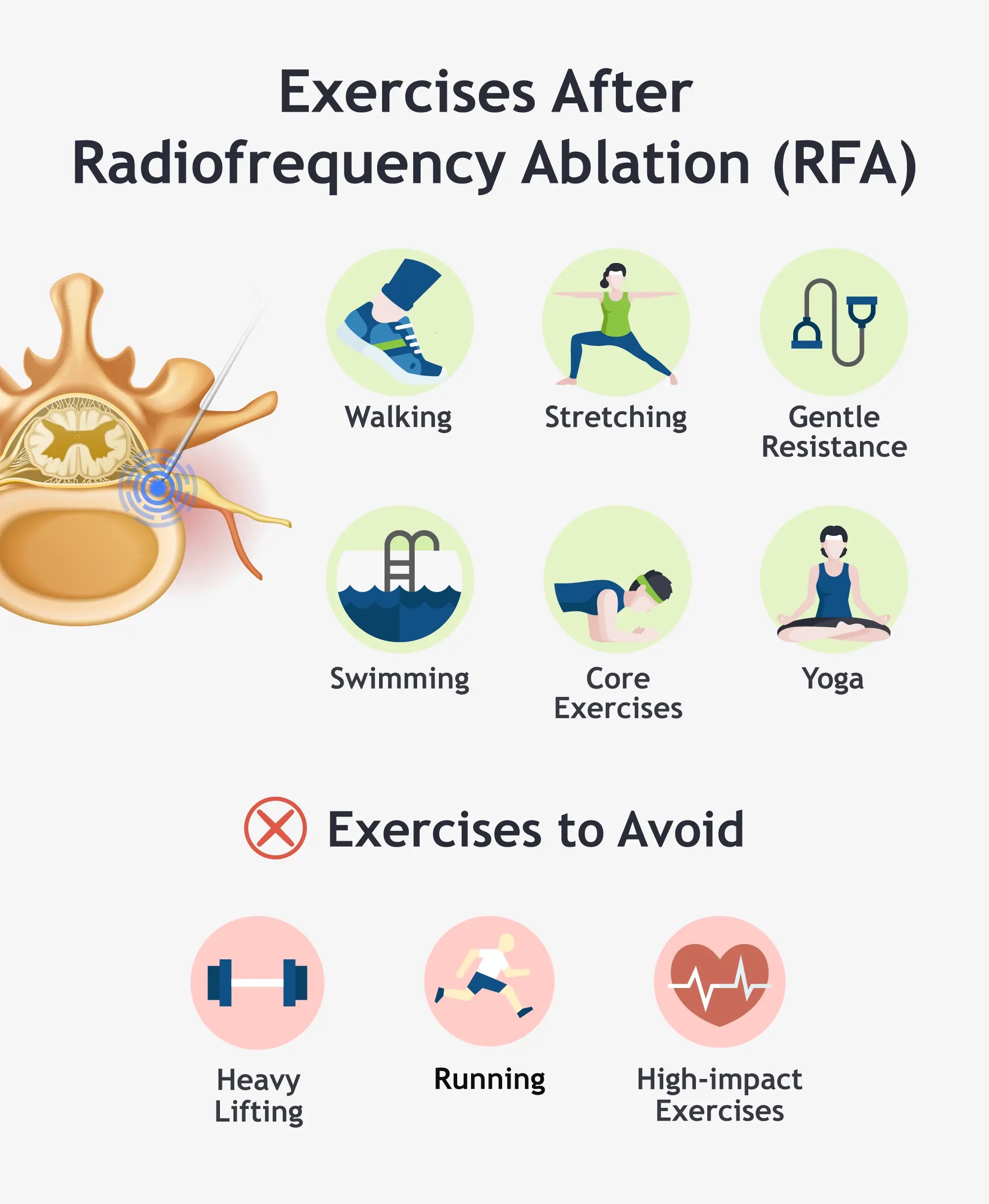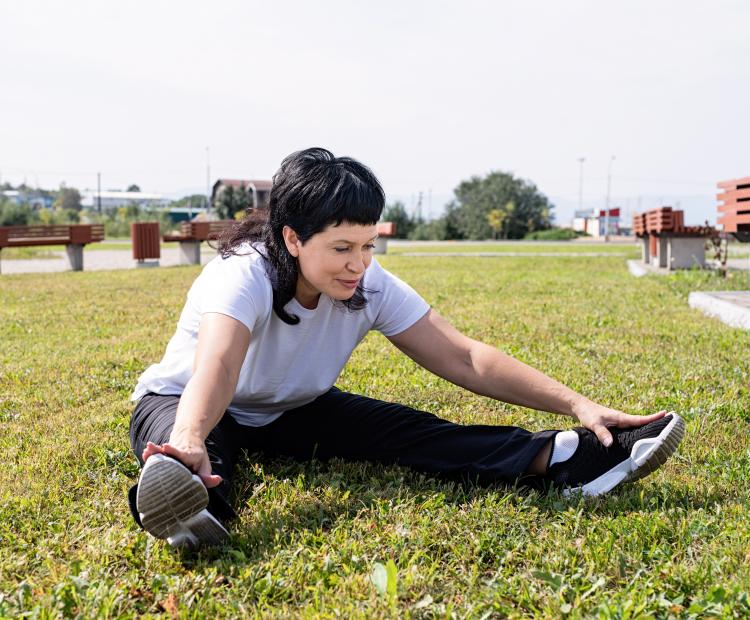If you have been living with chronic pain and radiofrequency ablation (RFA) has been recommended for pain relief, you may be looking forward to returning to a more active lifestyle after the procedure. But is exercise recommended after radiofrequency ablation? And what activities are safe? Exercise is an integral part of RFA recovery. Your pain management specialist can offer guidance on a safe approach to exercise after RFA.
At Advanced Spine and Pain, our pain specialists are available to answer any questions about radiofrequency ablation. You can call us at (480) 573-0130 or contact us online to learn more.
Radiofrequency Ablation Recovery
Radiofrequency ablation, or RFA, is a minimally invasive procedure used to treat chronic nerve pain, such as neuropathic pain, neck pain, and back pain, by blocking pain signals from nerves at the source.
To achieve pain relief, a pain specialist injects a numbing medication (local anesthetic) directly into the location of the particular nerve, causing irritation. They then use thermal energy from radiofrequency waves to create heat that destroys the nerve tissue sending pain signals to the brain.
After the procedure, your physician may recommend rest for 24 hours before you resume normal activities. However, radiofrequency ablation recovery is most successful with a program of exercise to help strengthen muscles and get moving again. In some cases, physical therapy may be suggested to help with targeted exercises to improve range of motion.
Why Should I Exercise After Radiofrequency Ablation?
There are several reasons that activity after radiofrequency ablation is important. Your physician can explain how exercise can help based on your specific pain treatment plan, but some common benefits of exercise include:
- Reduced pain and discomfort
- A faster healing process
- Increased strength and balance
- Improved flexibility and mobility
- Better chances of long-lasting pain relief
What Exercises Should I Avoid After Radiofrequency Ablation?
You should avoid strenuous activity immediately following a radiofrequency ablation procedure to reduce the risk of complications. This includes heavy lifting, running, and high-impact sports or exercise routines. Your doctor can advise you on when these activities are safe after radiofrequency ablation.
What Are the Best Exercises After Radiofrequency Ablation?
Although heavy exercise isn’t recommended after radiofrequency ablation, many lower-impact exercises can be an excellent choice to help with radiofrequency ablation recovery and overall fitness and health.
Always be sure to talk with your doctor before beginning any exercise routine. Stop exercise immediately and contact your doctor if you experience worsening or severe pain. The following exercises are often recommended:
Walking
To begin walking after radiofrequency ablation, start with short and slow walks and gently stretch before you begin. Walking is a low-impact activity and can help reduce stiffness. As your endurance improves, you can gradually increase the length of each walk.
Stretching
Gentle stretching exercises can help to loosen stiff muscles and joints and extend range of motion. After radiofrequency ablation, you may find that stretching allows you to gain movement that was not possible with pain present. Specifically, stretching is a great exercise after lumbar radiofrequency ablation.
Swimming
Like walking, swimming is a low-impact exercise. It is easy on stiff or sore joints and can help increase your overall endurance and strength. However, your doctor may ask you to wait a few days after radiofrequency ablation to begin swimming in order to allow the treatment site to heal.
Gentle Resistance
Resistance exercises can also help improve range of motion and strength when not overly strenuous. Always remember to start slowly with exercises that are easy and slowly increase resistance.
Core Exercises
Building core strength can be a helpful approach to exercise after facet joint injections for RFA, as well as other RFA treatments. Core exercises reduce pressure on the spine and improve balance and posture. Ask your doctor which core exercises are safe for you.
Yoga
Yoga combines stretching and core exercises and is known to improve mobility, function, and even pain relief. After an RFA procedure, you may find yoga is an excellent structured choice for regaining strength and range of motion.

Ready to Get Started with Radiofrequency Ablation for Pain Relief?
Our Advanced Spine and Pain providers can help walk you through whether radiofrequency ablation is the right pain management for your chronic pain, what to expect after your procedure, and what kind of exercise is best to help you recover and have the best outcome after RFA. Contact us online today for expert advice from our team, or call us at (480) 573-0130.
- Log in to post comments

